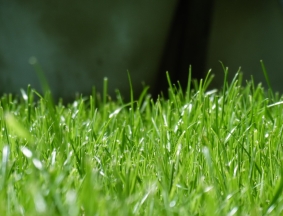Fresh grass Check can be carried out for various reasons. In addition to your own visual assessment of the grass in the field, you will also benefit from knowing the specific nutritional value of the fresh grass.
The Fresh grass Check is necessary to help you:
- Determine the ideal time for harvesting.
- Have clarity about what yours cows or horses eat during the grazing season.
- Fine-tune fertilisation.
Mowing time
When is the ideal time to mow? Ask this question to a group of dairy farmers or horse keepers and you will get all kinds of answers! Practical arguments often play a role too, such as the weather or the availability of the contractor. We see a trend of more and more livestock owners choosing not to leave mowing to chance. The length of the grass may be easy to judge, but what about the nutritional value? Is the grass already 'ripe' to be harvested for perfect feed value? A fresh grass sample can provide a lot of useful information on this, with a result given within five working days.
Choosing the right moment to start harvesting has a big impact on the feed value in the silage, hay or haylage and therefore on the next stable season. The ideal mowing time is not the same for everyone, however, as it is related to the geographical location of the farm (due to differences in temperature and precipitation), the history of the field (whether it is old or new grassland, for example), the fertilisation strategy, the type of soil and, last but not least, the livestock owner's ration requirements. Are you feeding fodder beet, concentrate, pellets or supplements, for example? Then you probably have different requirements for silage than a fellow animal keeper who has a large share of silage maize in the ration.
What are the animals eating in the pasture?
When the cows or horses are in the barn, you know in detail what is in the forage they consume. Based on this and the requirements of the animal, the ration is put together in order to ensure healthy livestock and optimise general condition and fertility, milk production or sports performance. But what about cows and horses that graze in the pasture? What's in the fresh grass? It is a good idea to analyse that too – more and more dairy farmers and horse keepers are doing just that. In this way, nothing is left to chance and the amount of concentrated feed, pellets or supplements during the grazing season can be adjusted accordingly.
Additionally, health problems related to digestion and metabolism during the pasture season can be reduced by adjusting the ration in time to the requirements of the animal.
Adjusting fertilization
Finally, the analysis of fresh grass is also useful for assessing various fertilization levels, as it provides an insight into the relationship between grass quality and fertilization. The palatability of the grass is included through the analysis of the sugar and sodium content.

